Figuring out the best way to maintain and grow a healthy green lawn can feel endless. Do you have dogs that like to run wild in your yard but still want to try growing some grass? Will the high dog traffic affect how your lawn grows?
Well, we've done extensive research into this topic and have a few things to share. Let's discuss!
One of the best ways to start a lawn in a high-traffic area is to use grass seeds labeled 'Durable' or 'Play Mix.' Especially if you have a few dogs, choosing a grass that will handle their constant foot traffic is essential.
Some experts even recommend covering the new grass seedlings with mulch to protect them while they shoot up from the soil.
Lastly, you need to give grass in high dog traffic areas plenty of water.
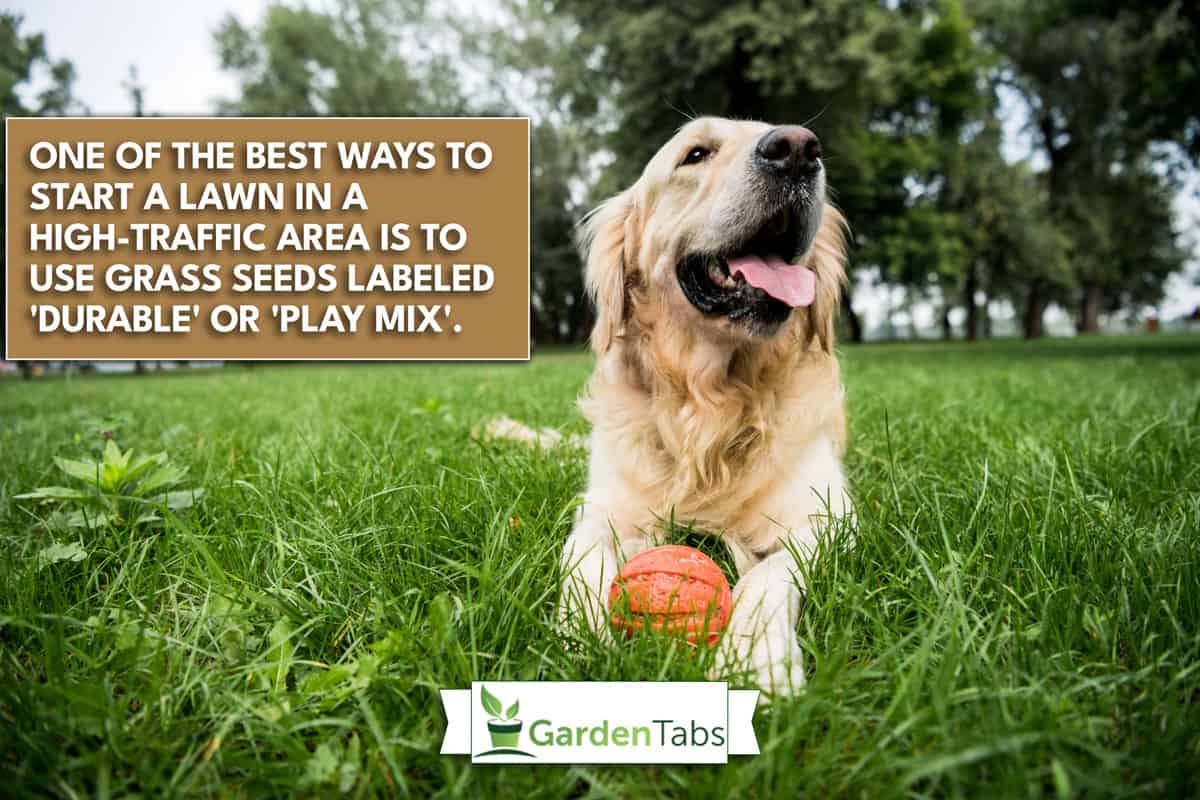
As we begin, we will cover all things growing grass in busier areas and discuss the best ways to do this. Whether you're a dog lover, run a kennel, own a farm, or need some advice, we're here to assist. With that said, let's dive right into this topic below!
Can Grass Grow In High Dog Traffic Areas?
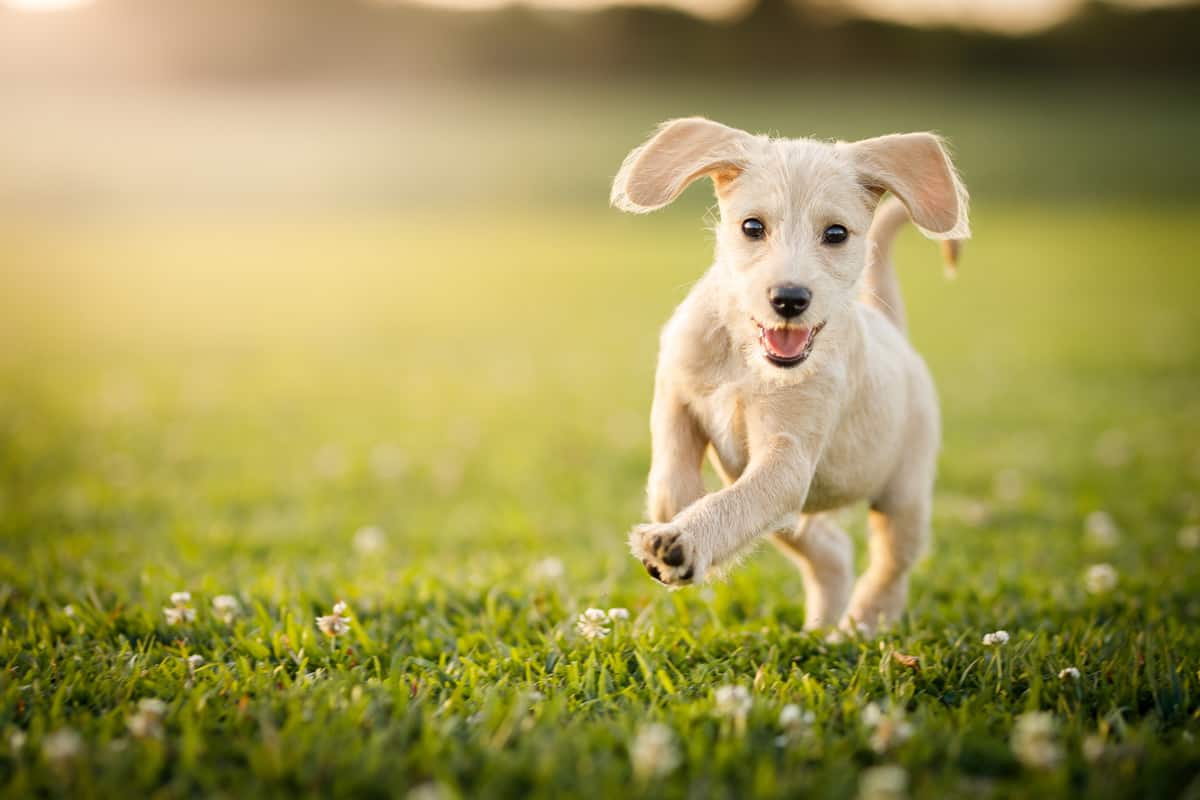
Although this can be tricky, growing grass in higher-traffic areas is possible. Especially when you're dealing with dogs or animals, growing the correct type of grass is vital.
For example, many experts recommend planting cool-season perennial ryegrass or tall fescue for higher dog traffic properties and even include other varieties like warm-season Bahia grass, Bermuda grass, or zoysia grass.
So, that's a lot of grass that can withstand foot traffic.
You also might want to try planting clover instead of traditional grass seed, as it grows fast and under compact soil conditions.
The main issue in places where dogs run and meet up is that the ground becomes too tight. Generally, when tons of people or animals congregate or travel over a given plot of land, this can pack the ground extra tight.
Considering that grass relies on oxygen in its soil, this can cause it to grow less or not at all.
Furthermore, the more compact a given lawn, the fewer nutrients, and water can make it to the roots of your grass blades. Of course, there are ways around this, which we'll discuss later on.
Will Grass Seed Grow If Dogs Walk On It?
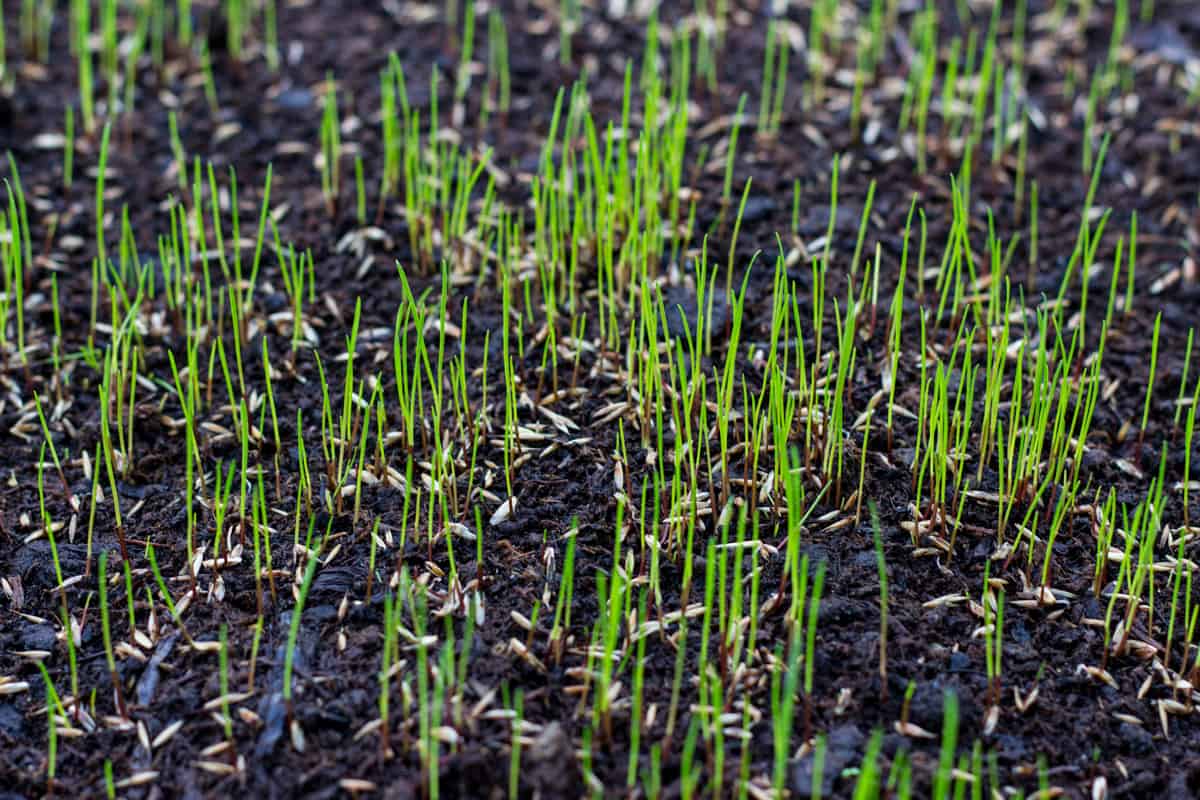
Allowing your dog to walk over newly planted grass seed can prevent it from growing. Typically, you want to avoid letting anyone walk over new grass, as this can cause it to die.
As we mentioned earlier, many experts prefer mulching over freshly laid grass seed, which will protect it if your furry friends decide to take a walk (or run).
You'll also need to keep freshly planted grass well-watered, so the area can become rather muddy.
Therefore, it's better to section off your new lawn until you see green blades emerge from the soil. The last thing you want is to spend the time laying down hundreds of seedlings, only to have a hoard of adorable dogs ruin all of your work.
According to Pepper's Home And Garden, grass seeds will send their initial roots into the ground within days of planting, so this is a pretty quick process.
With that said, you want to be cautious about allowing your pets onto the lawn for the first six or so weeks. Even if your grass begins to root quickly, it still needs time to establish itself in the soil.
How Do You Protect New Grass Seeds From Dogs?
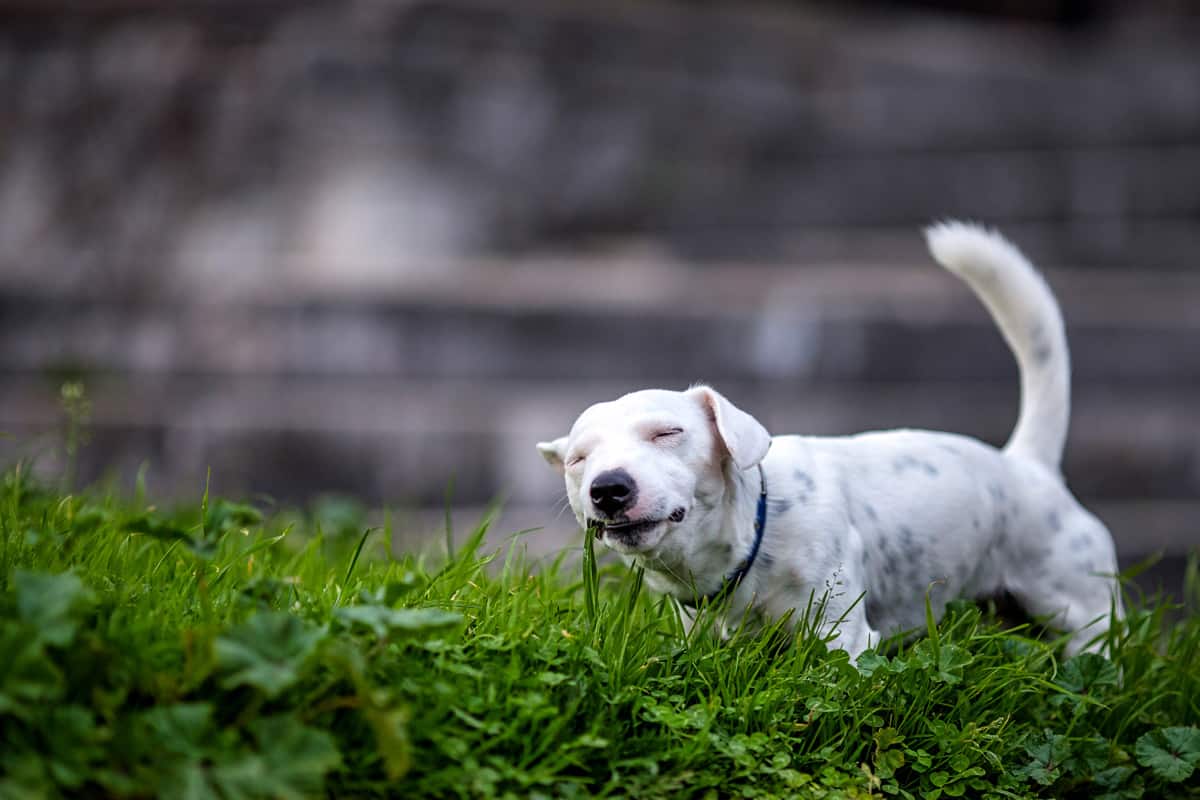
Now that you're aware of the basics forming a plan for your grass is essential. The best way to protect newly planted grass from dogs or foot traffic is to lay down an inch of mulch.
You can also try laying down a moderate layer of straw to help maintain the moisture in the soil and keep your animals from tearing the new seeds up.
However, don't get too wild with your mulch or straw. If you place too much onto the ground above your grass seedlings, it's possible to suffocate them.
Remember, new grass (and grass in general) needs oxygen to grow and survive.
If you don't give your grass enough space to receive air and other nutrients, don't expect your lawn to be successful.
On top of mulch and straw, there are other materials/supplies you can try using. We recommend grass clippings, shredded leaves, a layer of compost, plastic sheeting, and even burlap or peat moss.
Regardless, the key here is creating a protective zone for the grass seeds, which will prevent your dogs from ruining your future lawn.
It can be challenging to section off a large portion of your yard, so we think covering the entire area with these options is a much more practical approach.
Will Dogs Eat New Grass Seed?
In general, your dog shouldn't eat the grass seeds from the soil. With that said, this can occur if your dog puts its food or toys where you planted your new lawn.
Although eating a few grass seeds shouldn't be dangerous, that's not to say they can't harm your pup.
Most of the time, swallowing grass seedlings can cause inflammation, irritation, and trouble swallowing for a dog, so keep a close watch on your animal's behavior.
Luckily, grass seeds don't have an attractive aroma, so your dog isn't likely to scout them out.
Again, if you cover your newly laid seedlings well, this shouldn't become a problem, so we recommend focusing on doing that before anything else.
It's always possible for your pets to do something out of the ordinary, so the more safeguards in place, the better.
How Do You Care For Grass In High Traffic Areas?
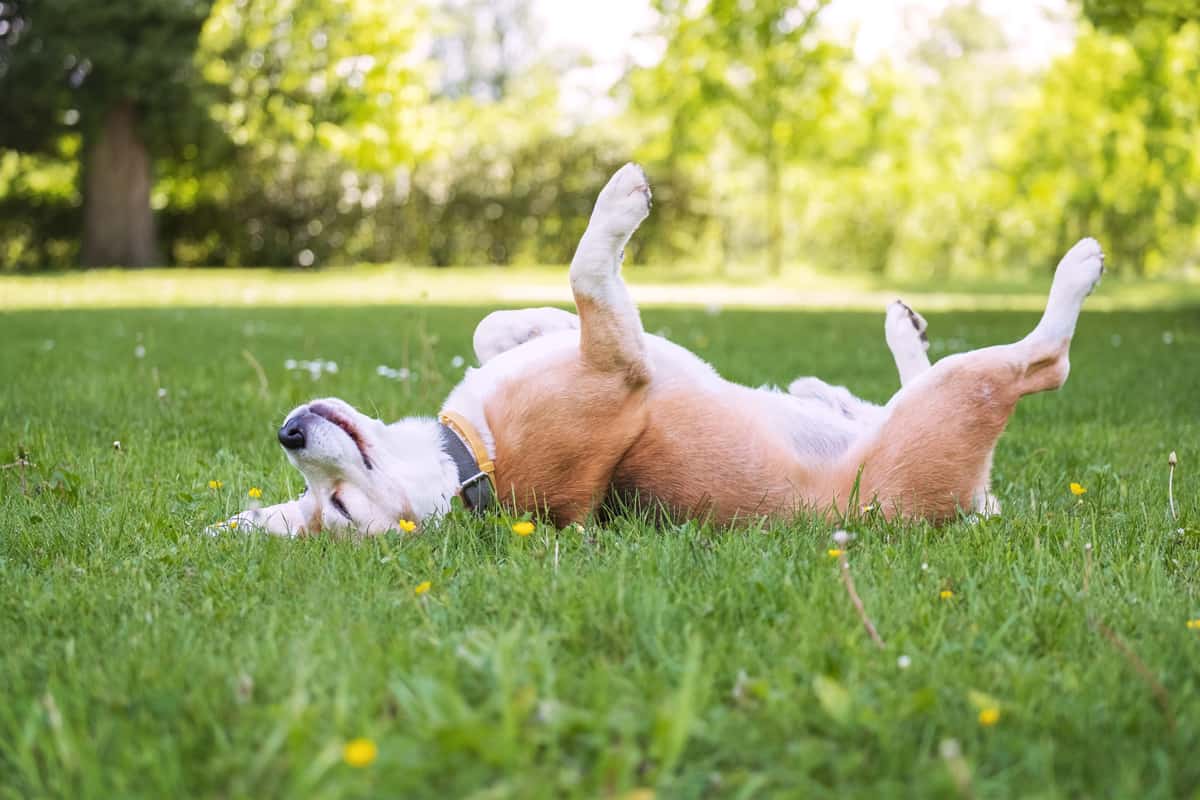
Once your grass starts to sprout from the ground, it's time to maintain it. Considering you can't cover grass forever with mulch or whatever else you use, keeping it well-watered and adequately cared for is essential.
According to the experts, here are some things you can do to keep grass looking lush in high-traffic areas:
- Grow dog/foot traffic resistant grass varieties
- Aerate the soil each year
- Mow your grass routinely
- Avoid keeping your grass too moist
- Fertilize your lawn a few times per year
When growing grass somewhere, dogs will run and congregate; the best thing you can do is keep the soil from becoming overly compacted.
Figuring that oxygen, nutrients, and water needs to be able to move through the ground where your lawn grows, aerating is an easy way to ensure this keeps happening.
Although this can require manual labor, aerating your high-traffic grass yearly will benefit it greatly. Furthermore, you can use products that aren't as manually intensive, like aerating shoes.
Imagine being able to strap on a pair of aerating shoes and just having to walk over your lawn. Sounds easy.
Opmeiro Lawn Aerator Shoes
These aerating lawn shoes are adjustable, fit women's shoe sizes 6-10 and men's 6-9, have three velcro straps, are aluminum alloy and plastic material, and have excellent online customer reviews.
Follow this link to view them on Amazon.
How Do You Water Grass In A High Dog Traffic Area?
Typically, you want to keep the ground moist while your grass seedlings develop. Another benefit of adding a ground cover, like mulch, is that it retains water for your new lawn, which can be beneficial.
Again, you want to keep your dogs out of this area for the first six weeks. Not only is your grass extra delicate during this period, but the soil will also be soggy sometimes.
Once you notice blades shooting up from the ground, you can slowly phase into a more normal watering schedule. Ideally, thoroughly water high-traffic grass 1-2 times each week.
According to Melinda Myers, you want to give your grass enough water; its top few inches of soil are crumbly and moist.
Giving your lawn plenty of water is also super important to wash away any dog urine that might be trapped in the grass.
Especially if you have a lot of animals running around, urine and feces can start to take over your lawn area, so keep that in mind.
Can Dog Pee Kill Grass?
Yes, dog pee can kill your grass. Generally, it's not ideal to frequently let your animals pee on the grass, as this can cause dead patches and less fertile soil.
We recommend spraying your lawn whenever you notice any animals urinating on it to prevent long-term damage.
If you have sprinklers, you may even want to turn them on for five minutes after a few dogs have gone to the bathroom.
Luckily, you can usually re-seed any areas where urine has affected, although you'll have to wait a few weeks to see any greenery.
According to Lawn Love, if you don't re-seed, your grass will still eventually cover the section(s) that became thin or died, so you don't always need to spring into action.
Even if you don't have dogs, caring for and maintaining, grass can be tricky and time-consuming.
To Finish Up
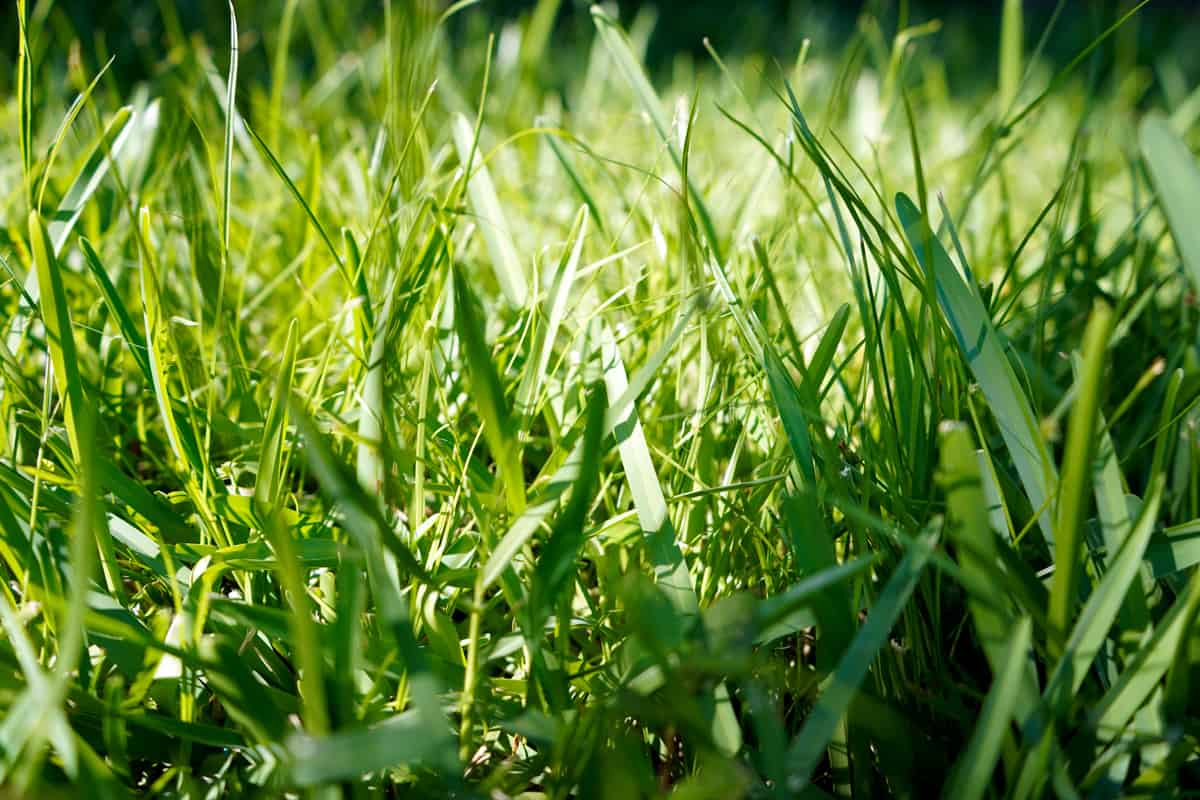
Whether you have grass or want to plant some, managing it with high dog traffic can feel impossible. From what we found, you can grow a lush, healthy lawn with dogs running around, but you'll need to be careful for the first six weeks.
Ideally, we recommend using a ground cover above your new grass seeds, like mulch or straw, which will retain its moisture and protect it from any animals.
You also want to continually aerate your grass if you have high traffic, as the ground can become heavily compacted and stop being fertile.
Regardless, keep the ground moist for your grasses' first six weeks, and don't be afraid to purchase a pair of aerating shoes and get walking!
Made it to the end? Check out these helpful related posts below!

